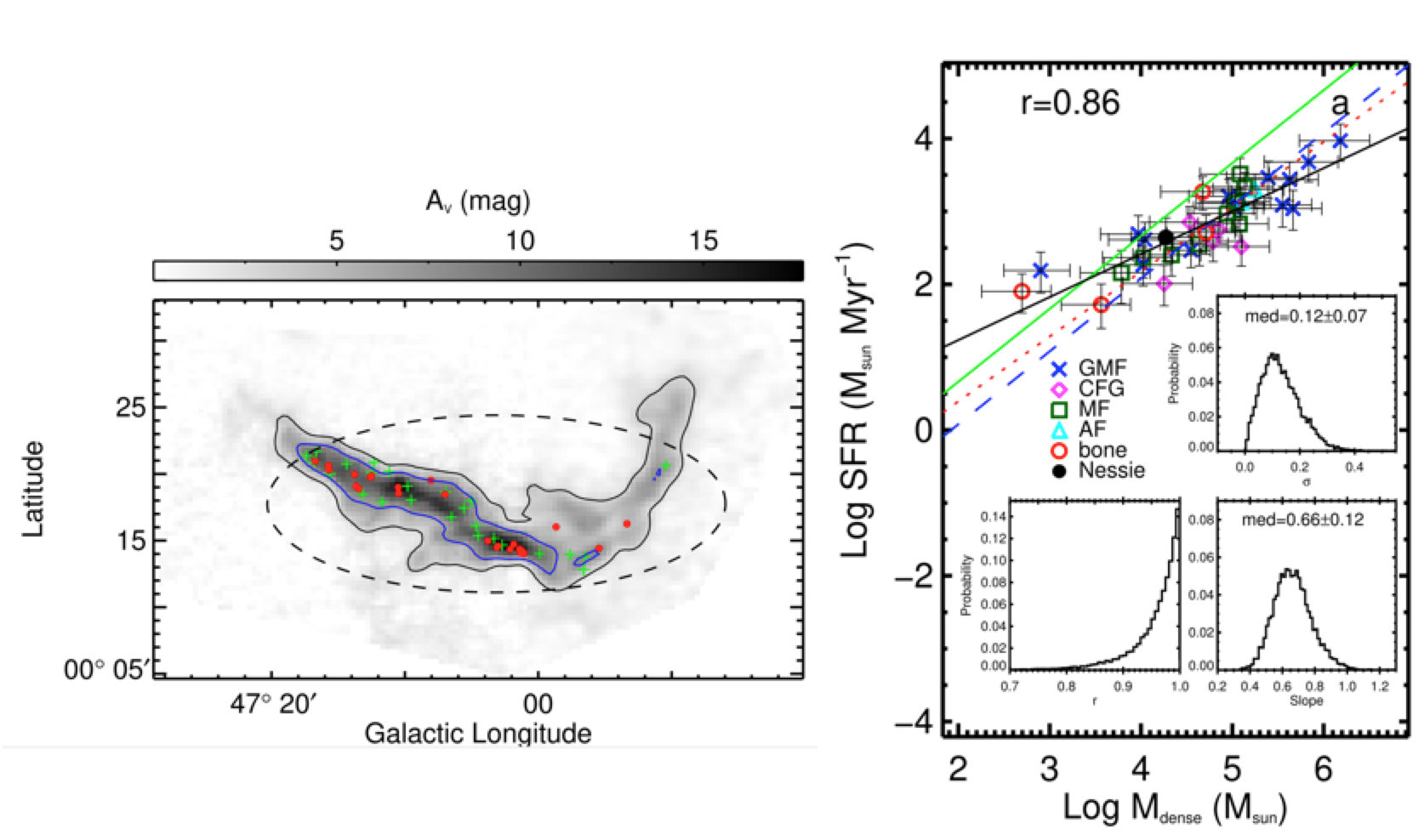
Scientists from Max Planck Institute for Astronomy in Germany and Purple Mountain Observatory performed a statistical study of star formation activity in the Galactic large-scale filamentary structures that are known as giant molecular filaments (GMFs).
This is the first systematic investigation of star forming content towards GMFs.
Galactic molecular clouds are known to commonly exhibit filamentary structures. Recently, the Herschel results have highlighted the ubiquity of filaments in the interstellar medium (ISM) and their importance in the star formation process.
Interestingly, observational studies have discovered and identified a growing number of large-scale filaments with lengths up to ~ 100 pc. These objects may be linked to the Galaxy- scale distribution of dense gas and trace features such as the central potential well of spiral arms and spurs sheared off from spiral arms. However, the studies so far have not confronted this suggestion with an analysis of star formation within the GMFs; the star formation activities of GMFs remain unknown.
Based on the multi-wavelength archival data, Dr. ZHANG Miaomiao and his collaborators from Purple Mountain Observatory, Chinese Academy of Sciences, have presented a systematic study of physical properties and star formation within all currently known GMFs.
They first analyzed gas properties, such as dense gas masses, using a homogenous approach for all GMFs and then identified and classified the young stellar object (YSO) populations within each GMF using multi-wavelength photometry from near- to far-infrared.
This allows them to estimate the star formation rates (SFRs) of the GMFs and to establish relationships between the SFRs and the GMF properties.
They found that, on average, the SFR surface density and star formation efficiency of GMFs were similar to the nearby star-forming clouds, which indicated that the GMFs were not special objects from the perspective of star formation.
They also found that the star formation rate per free-fall time of GMFs is in the range of ~0.002-0.05 with a median value of ~ 0.02.
They tried to test the correlations between SFR surface densityand gas surface density per free-fall time. However, the large uncertainties of these parameters hamper any definite conclusion. The correlations between the SFR and gas mass above the extinction contours of Av = {3, 7}mag indicate that the mass of dense gas is an important parameter in predicting SFRs of molecular clouds.

Figure 1. Left: overview of one GMF. Background is CO-based column density map with contour levels of Av=3 (black), 7 (blue) mag. The identified YSOs are marked with red (Class I) and green (Class II) symbols. Right: the correlation between SFR and dense gas mass for GMFs. Different symbols show the GMF samples discovered by different authors. The inset panels show the fitting results based on Bayesian linear regression method. (Image by ZHANG Miaomiao)

86-10-68597521 (day)
86-10-68597289 (night)

52 Sanlihe Rd., Xicheng District,
Beijing, China (100864)

